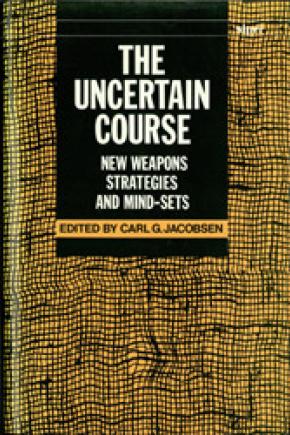The Uncertain Course: New Weapons, Strategies and Mind-sets
The Uncertain Course: Introduction
Carl G. Jacobsen
Part I. Old mind-sets, new weapons
Paper 1.1. International dynamics: Arms defiant
Carl G. Jacobsen
Paper 1.2. Arms Control Impact Statements (ACISs): Critique and prescription
Laurel C. Schneider
Paper 1.3. New challenges and old mind-sets: Ten rules for empirical realists
Ken Booth
Part II. New military capabilities, new doctrines
Paper 2.1. New military capabilities: Propellants and implications
William H. Kincade
Paper 2.2. Strategic defence and international security
Gerald Segal
Paper 2.3. Soviet military doctrine and space in the 1980s
David R. Jones
Paper 2.4. Conventional force modernization and the asymmetries of military doctrine: Historical reflections on Air/Land Battle and the Operational Manoeuvre Group
Jacob W. Kipp
Paper 2.5. US naval strategy and nuclear weapons
Richard W. Fieldhouse
Paper 2.6. Soviet strategy: The naval dimension
Carl G. Jacobsen
Paper 2.7. Future cruise missiles: Nature and impact
William H. Kincade
Paper 2.8. The implications of increased mobility, force diversification and counterforce capabilities for strategic arms control
Michael Krepon
Part III. New complications for international security
Paper 3.1. Modernization of British and French nuclear forces: Arms control and security dimensions
Edward A. Kolodziej
Paper 3.2. Chinese nuclear forces: Overview and ambitions
Richard W. Fieldhouse
Paper 3.3. Strategy, security and advanced computing
Allan M. Din
Paper 3.4. Emerging technology, exotic technology and arms control
Phil Williams
Part IV. Beyond the security dilemma
Paper 4.1. Battle management: The control of war, crisis and armed peace
William H. Kincade
Paper 4.2. Beyond the security dilemma: Technology, strategy and international security
Nicholas J. Wheeler and Ken Booth

